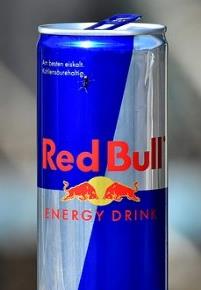What Your Heart Experiences When You Drink Energy Drinks
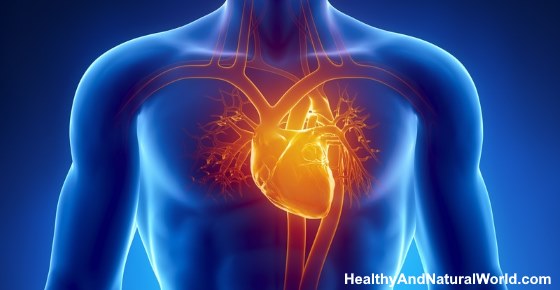
Energy Drinks “Increase Stroke Risk by 500%” Due to Irregular Heartbeats.
The primary ingredients of most energy drinks are caffeine and sugar. Many energy drinks also contain aspartame, the artificial sweetener that has been linked to neurotoxic, metabolic, allergenic, fetal, and carcinogenic effects.
Consumption of diet drinks is also linked to greater risk of dementia and stroke.
Research published in the American Heart Association’s journal Stroke found that drinking diet soda is linked to a greater risk of stroke and dementia.
Why Energy Drinks Such as Red Bull are Extremely Dangerous
When feeling tired and low on energy, many people’s first reaction is to reach for a cup of coffee. Energy drinks are the another popular ‘solution’.
One of the most famous energy drinks, Red Bull, created a name for itself as a beverage that ‘gives you wings’. Sponsoring many extreme sport events, Red Bull’s marketing motto states that they support daring people and innovative ideas. They don’t mention the potential health dangers of their signature drink.
Energy Drinks Consumption Can Cause Stroke and Heart Attack
The popular Red Bull has now been associated with cardiovascular problems, including stroke and heart attack. It has been banned in Norway, Denmark and Uruguay, and France stopped selling it between 1996 and 2008.
Red Bull thickens the blood and provides the body with an unnatural level of stimulation.
Scott Willoughby, lead researcher from the Cardiovascular Research Center at the Royal Adelaide Hospital in Australia, reports that one hour after drinking just one can of Red Bull, blood consistency of the research participants became abnormal and resembled that of a heart patient.
Willoughby warns that when combined with stress or high blood pressure, Red Bull can cause damage to blood vessels and creates the risk of blood clotting. This is especially dangerous for people who have a predisposition to cardiovascular disease.
Red Bull’s primary ingredients are caffeine and sugar. The sugar free version contains aspartame, the artificial sweetener that has been linked to neurotoxic, metabolic, allergenic, fetal, and carcinogenic effects.
The Red Bull’s original manufacturer in Austria even warns their customer not to drink more than two cans a day.
As with other caffeinated beverages, Red Bull gives you a quick high. But this is short-lived and it turns into a low, so you soon feel you need another energy boost. And another can (or cup). You enter a vicious cycle and many people get addicted to Red Bull and other energy drinks.
Energy Drinks “Increase Stroke Risk by 500%” Due to Irregular Heartbeats
Energy drinks could increase a person’s risk of having a stroke by 500% as addictions are causing a rise in irregular heartbeats, claim experts.
It is thought that this is because excessive caffeine in energy drinks dramatically increases the amount of calcium released within the heart’s cells, disrupting the electrical rhythm.
Founder and CEO of The Arrhythmia Alliance, Trudie Lobban, said: “You wouldn’t necessarily have to have a faulty heart to suffer from arrhythmia – stimulants containing caffeine can trigger it. Six or seven coffees a day could do it, but these energy drinks carry a really high risk.”
Red Bull can Cause Acute Psychosis
On top of the adverse effects connected with high caffeine content, Red Bull contains different chemicals that have not been properly researched yet. Many people also combine it with alcohol, which adds to the potential dangers. It means mixing a stimulant with a depressant. This can overload the body and lead to serious health problems.
According to an article published in 2001 in the journal Medicine, Science, and Law, when combined with ephedra, which is also a stimulant, Red Bull can cause acute psychosis.
It is especially worrying that Red Bull and other energy drinks are marketed towards young people and students, creating a whole generation of people that is unable to reach normal energy levels the natural way.
What Happens When you Drink a Can of Energy Drink
Within 20 minutes, you get a sugar high. Your blood sugar spikes, resulting in a quick release of the hormone insulin.
Within 40 minutes, all the caffeine is absorbed and your body responds to this substance: the pupils dilate, blood pressure rises, and the liver dumps even more sugar into the bloodstream.
Around 45 minutes after you have had your energy drink, your body increases dopamine production, which gives you a sensation of pleasure – this is similar to the way the body responds to heroin.
After 60 minutes, you develop a sugar crash. The caffeine slowly begins to wear down and you can experience fatigue, change in mood, lethargy, mental fogginess.
Do you drink diet soda? Did you know that Drinking One Diet Drink Daily Can Triple Risk Of Dementia & Stroke (and Cause Cancer).
In addition, massive studies link soda to heart attacks, brain damage, depression, and kidney damage.
So what is the alternative to drinking excessive amounts of caffeinated beverages?
Many experts advise that by doing the following things you can successfully boost your energy levels:
- Improve your diet (find here 10 superfoods to superboost your energy and my other article about the best 8 secrets for endless energy).
- Increase your intake of omega-3 fatty acids.
- Cut down on sugars.
- Reduce your stress levels (find here natural remedies for stress and anxiety).
- Get enough good quality sleep.
- Exercise regularly.
“Everything in moderation” is usually pretty sound advice, but let’s face it: Some things you should just not put in your mouth. From artificial flavors and colors to words you’d need an advanced degree in chemistry to pronounce, there are thousands of ingredients making their way into your food that are simply not, strictly speaking, food.
10 Common Foods That Are Actually Fake and You Shouldn’t Eat
Just because the product you eat smells like a strawberry and tastes like a strawberry doesn’t mean it actually contains strawberry. Sometimes you need to ask yourself if what you are eating is a real food or is it just a mixture of chemicals and artificial additives.
Here are 10 food imposters you should never ever eat ! As a start I would suggest you to read the food labels and see what they contain – you may be shocked by what you find out.
I’ve already written in the past about the top 10 worst ingredients in food, and many of the foods listed below contain these ingredients, so watch out for what you eat.
1. Crab Sticks
You may be thinking that you eat crab in crab sticks, but this name is misleading. Crab sticks are actually manufactured from a processed seafood made of finely cheap pulverized white fish flesh (called surimi), with different edible additions (crab extract, crab flavor, seasonings etc).
Surimi is available in many shapes, forms and textures, and is often used to imitate the texture and color of the meat of lobster, crab, and other shellfish. In crab sticks it is shaped to resemble leg meat of a crab.
It enables food manufacturers to take cheap fish and upgrade it to a taste of the most expensive fish meats such as crab or lobster.
This could have been worse as fish is considered good for us, but still it’s not a crab and it’s still a highly processed product with many additives. The assortment of additives may include other fish products, but it is usually egg whites, oils, salt, monosodium glutamate (MSG) and various starches and gums to create the expected texture.
2. Easy cheese
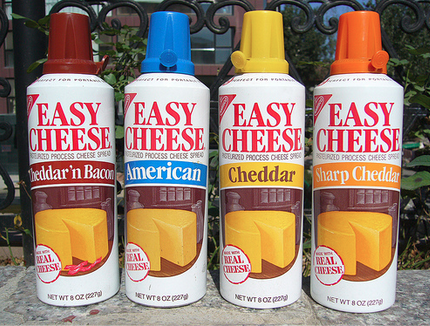 Easy Cheese is the trademark for a processed cheese product also referred to spray cheese or cheese in a can, and is a descendant of squeeze cheese packaged in a squeezable plastic tube.
Easy Cheese is the trademark for a processed cheese product also referred to spray cheese or cheese in a can, and is a descendant of squeeze cheese packaged in a squeezable plastic tube.
This product was created for people who like to eat cheese but can’t be bothered to get a knife and slice it for consumption. It comes packaged in a pressurized can, much like canned whipped cream and does not require refrigeration.
Whereas cheese is made from handful of ingredients, Easy Cheese contains many additives such as whey protein concentrate, canola oil, milk protein concentrate, sodium citrate, sodium phosphate, calcium phosphate, lactic acid, sorbic acid, sodium alginate, apocarotenal, annatto, cheese culture and enzymes.
3. “Cheez Whiz” cheese Dip
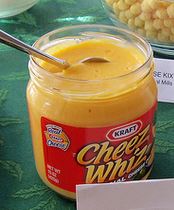 Cheez Whiz is a thick processed cheese sauce or spread, and many refer to it as ‘pseudo-cheese’.
Cheez Whiz is a thick processed cheese sauce or spread, and many refer to it as ‘pseudo-cheese’.
The yellow paste usually comes in a glass jar and is used as a topping for cheesesteaks, corn chips, hot dogs and other foods. The advantage of it is that it’s more spreadable and melts better than natural cheese.
A single serving, which is defined as just two level tablespoons, contains nearly a third of a day’s recommended maximum of saturated fat as well as a third of the maximum sodium recommended for most of American adults.
The problem is that if you sit in front of the TV and start dipping your crackers in it, it’s hard to stick to only 2 tablespoons.
Also there are so many items listed in this product, starting with the watery by-product of milk called whey, canola oil, corn syrup, and an additive called milk protein concentrate, which manufacturers had begun importing from other countries as a cheaper alternative to the more expensive powdered milk produced by American dairies. So is it really a cheese, or perhaps more of a yellow-dyed paste?
4. Tofurky Italian vegan sausage
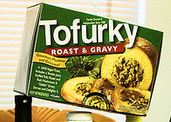 Tofurky is one of the leading vegetarian turkey replacement brands, and is made from a blend of wheat protein and organic tofu.
Tofurky is one of the leading vegetarian turkey replacement brands, and is made from a blend of wheat protein and organic tofu.
You’ve probably heard that cutting back on meat (especially red meat) can help prevent heart disease and cancer in some cases, but replacing it with processed meat substitutes comes with its own price.
Most meat substitutes are highly processed and full of artificial additives. Many are made from soy protein isolate, wheat gluten and other textured vegetable proteins, but also some questionable ingredients that help to mold them into meat-like shapes.
So read the label on the package before buying. If the list of ingredients is long, it’s more likely there are additives and preservatives to stabilize the food, add flavor, or change its consistency.
Some of these additives can include unhealthy amounts of extra salt, fat and sugar, as well as artificial additives. So why not just opt for tofu and green beans instead?
5. Chicken nuggets
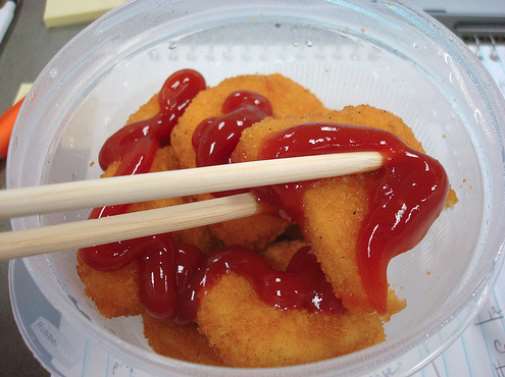 Usually chicken nuggets contain just 40-50% meat and have been battered and deep fried. The rest seems to belong more to an industrial factory but not to a food retailer.
Usually chicken nuggets contain just 40-50% meat and have been battered and deep fried. The rest seems to belong more to an industrial factory but not to a food retailer.
Chicken nuggets are sold in various portion sizes. We all know that white chicken meat is one of the best sources of lean protein, but what has happened is that some companies have chosen to use an artificial mixture of chicken parts rather than low-fat chicken white meat, batter it up and fry it.
Chicken nuggets tend to have a high fat content because they are breaded and fried, and are high in calories, salt and sugar. Eating them occasionally will not kill you, but since they taste good, are cheap and convenient and kids love them, it’s easier to eat them more often.
6. Tang fruit drink
 This is a fruit-flavored breakfast drink that has been a part of many Americans’ breakfast since its release in the late 1950s.
This is a fruit-flavored breakfast drink that has been a part of many Americans’ breakfast since its release in the late 1950s.
It was used by some early NASA astronauts in their space flights and was marketed as an astronauts drink.
But you’re mistaken if you thought Tang was in any way related to fruit juice. For example, there is very little orange in the citrus flavored drink. According to its label, Tang contains sugar, less than 2% of orange juice solids, artificial colors and many other additives.
Actually most of Tang’s flavor comes not from orange juice but from “natural and artificial flavor”.
It is a drink that is engineered to taste like orange. You’d better have an orange with your breakfast to serve your body better. Instead of drinking this fake juice, go for real smoothie ! You can find out instructions on How to Make 10 Easy Smoothies for Breakfast.
7. White bread
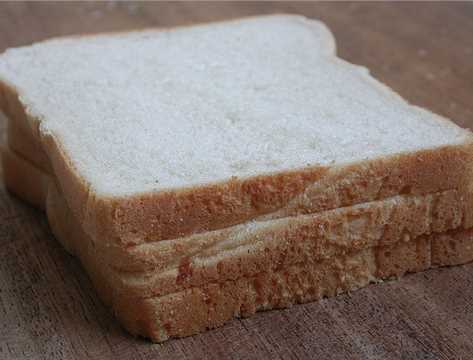 It has been known for a long time that white bread and refined grains in general aren’t particularly nutritious with all the nutrients taken out.
It has been known for a long time that white bread and refined grains in general aren’t particularly nutritious with all the nutrients taken out.
As you know, whole grains are a good source of fiber and complex carbohydrates and can also improve your digestive system’s health, but when the flour is refined, it loses many of its nutrients.
Refined grains are no longer a complex carbohydrate and are no longer a slow release source of energy. They need little digestion and are absorbed rapidly so increase glucose levels in the body.
During the refining process of wheat, the germ and the bran is removed and this means that the most nutritious part of the grain including fiber, vitamins and minerals is lost.
It can be fortified, but sometimes with cheapest form of minerals and vitamins that are poorly absorbed by the body.
8. Uncrustables – peanut butter and jelly sandwich
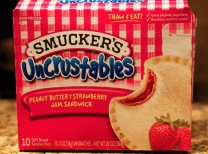 These are massed produced sealed crust-less sandwiches. If you are too busy to spend 30 seconds making a fresh sandwich, then this product is for you.
These are massed produced sealed crust-less sandwiches. If you are too busy to spend 30 seconds making a fresh sandwich, then this product is for you.
But look at the long list of ingredients and how processed this product is. The only thing on this list that looks like food is strawberries, but there is very little of it, and the rest are artificial ingredients that you’d be better to avoid, such as high-fructose corn syrup and heart-damaging hydrogenated oils.
9. “Gushers” fruit snack
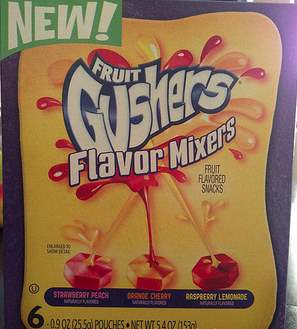 Fruit Gushers are fruit snacks made primarily from sugar and fruit juice with other ingredients.
Fruit Gushers are fruit snacks made primarily from sugar and fruit juice with other ingredients.
The ingredient list for the strawberry flavor is long and doesn’t even mention strawberry but sugar, corn syrup, artificial colors and many other additives.
So don’t fool yourself that this fruit snack is “fruity”. This is not a healthful snack product when, in fact, the product contains unhealthy partially hydrogenated oil, large amounts of sugar and artificial colors.
10. Maple flavored syrup
 Maple syrup is a syrup usually made from the sap of the maple tree, and many people love genuine 100% maple syrup, but the cheap, fake syrup that is a mix of water, high-fructose corn syrup and caramel coloring is not what you are looking for.
Maple syrup is a syrup usually made from the sap of the maple tree, and many people love genuine 100% maple syrup, but the cheap, fake syrup that is a mix of water, high-fructose corn syrup and caramel coloring is not what you are looking for.
In the United States, “maple syrup” must be made almost entirely from maple sap, although small amounts of substances such as salt may be added.
On the other had “Maple-flavored” syrups include maple syrup but may contain additional ingredients. “Pancake syrup”, “waffle syrup”, “table syrup”, and similarly named syrups are substitutes which are cheaper than maple syrup, and in these syrups the primary ingredient is most often high fructose corn syrup and they have no genuine maple content.
So choose real foods as much as possible and be more aware of what goes into your body.
Related: Top 5 Cancer Causing Foods to Avoid According To Science
Bottom line: Even though you can buy these 10 foods at the grocery store doesn’t mean you should. find out more information about the top 10 worst ingredients in food and about the top 5 Cancer causing foods to avoid.
On the other hand, you can find more information about healthy eating and nutrition in my e-book Effortless Healthy Eating which is part of the Natural Health Revolution Program. This program will help you to achieve your health, nutrition or weight loss goals.
Read my other related articles:

